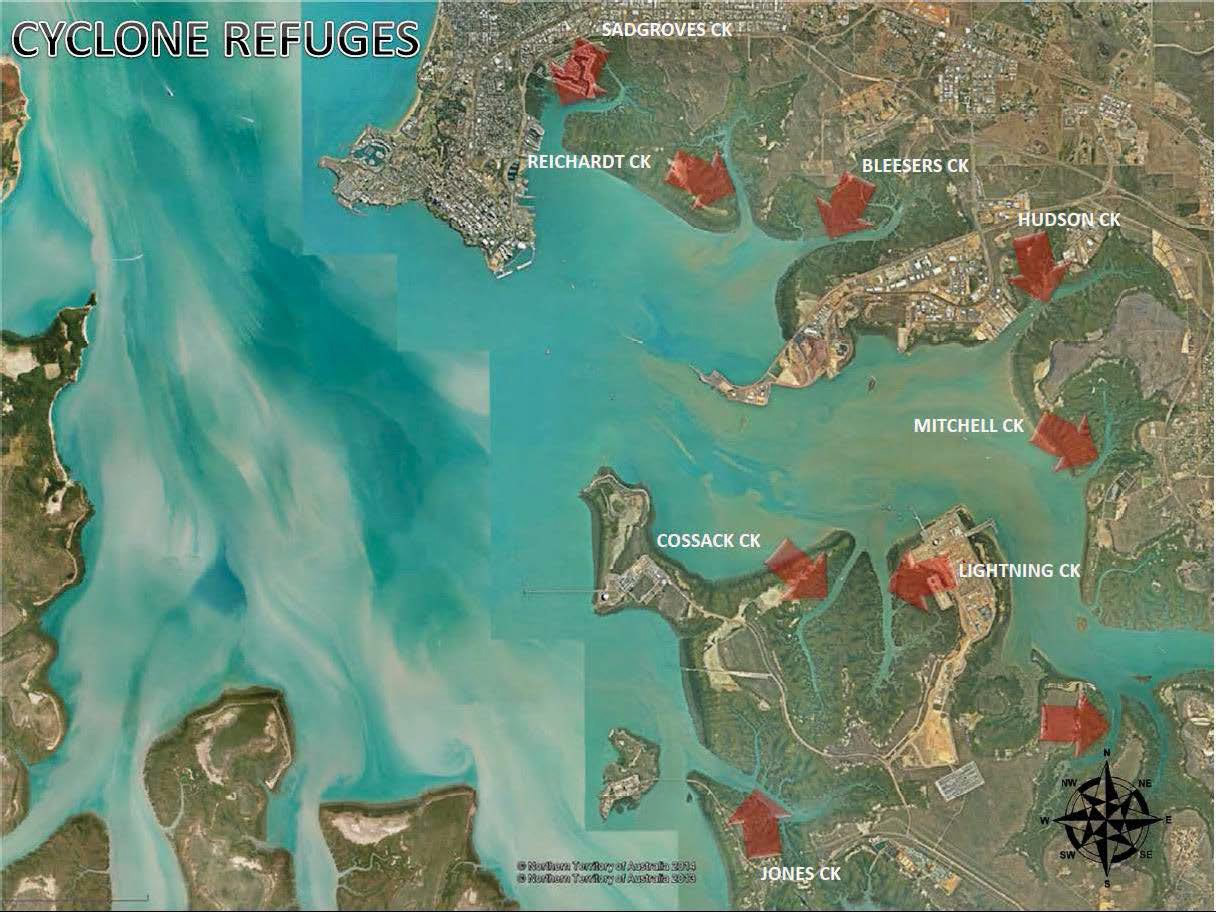Boat safety during cyclone season
Cyclone season in the Northern Territory is from November to May.
Cyclones are dangerous because they can produce huge waves, extreme winds, thunderstorms and heavy rain.
If you own or operate a boat, you need to be prepared if a cyclone comes.
Read below to find out what steps you should take before and during a cyclone.
Your responsibilities
Remember that saving and preserving life is your first priority.
You should:
- act early, be decisive and remove yourself from harm
- always let someone know where you are.
Plan ahead
Be prepared for cyclone season by doing the following:
- Prepare a cyclone management plan.
- Plan to move your vessel to a safe spot including:
- creeks
- the marina or
- a cyclone-rated mooring in the harbour.
- Monitor the weather continuously and the movement of the cyclone. Keep updated by:
- going to the SecureNT website
- listening to marine radio channel 16/10 VHF for weather and safety message updates from harbour control.
Secure equipment and areas of your boat
Check all equipment works and is safely secured by doing the following:
- Secure all loose objects on deck or inside the boat so they can't damage the boat or hurt people onboard. This includes:
- securing the booms, sailing yards, batteries, safety equipment, chairs, or any other loose item, and bring it inside the boat if possible
- removing all fishing rods from rod holders and securing them.
- Double up the securing arrangement for your vessel so that it can withstand the weather.
- Use an approved mooring plan for your vessel if you have one.
- Batten down and make sure all watertight openings are shut to prevent water flooding the boat.
- Clear freeing ports and scuppers so water on deck gets cleared quickly.
Find shelter
Find out where the nearest banks or coastline is for you to take shelter in.
You should be able to move to a safe haven as soon as you know the cyclone is near.
The map below shows Darwin Harbour cyclone refuges.

Small vessels
- If you're at sea, return to port early while it's safe to do so.
- If you're in port, avoid going on the water until the weather improves.
- Stay low close to the floor of the vessel.
Large vessels
If you're in port, you may need to stop operations and go out to sea if severe weather worsens.
More information
For plans and information about emergency management, including how to prepare for a cyclone, go to the SecureNT website.
Contact
For more information, see wharves and moorings contacts.
Give feedback about this page.
Share this page:
URL copied!